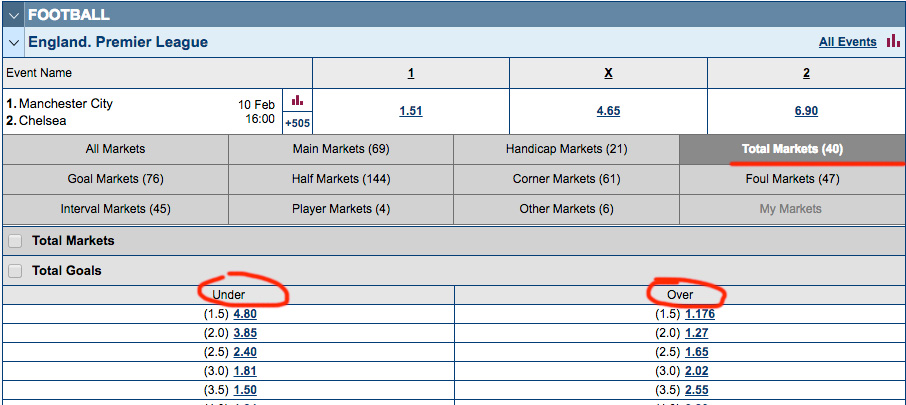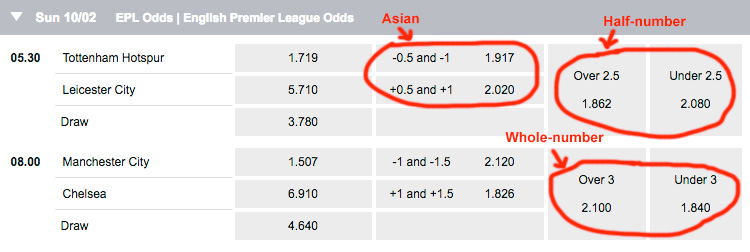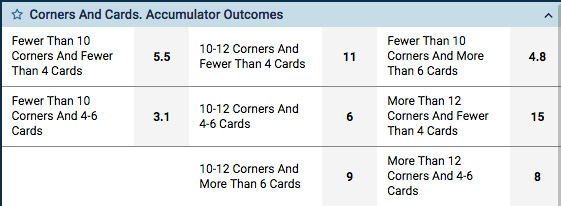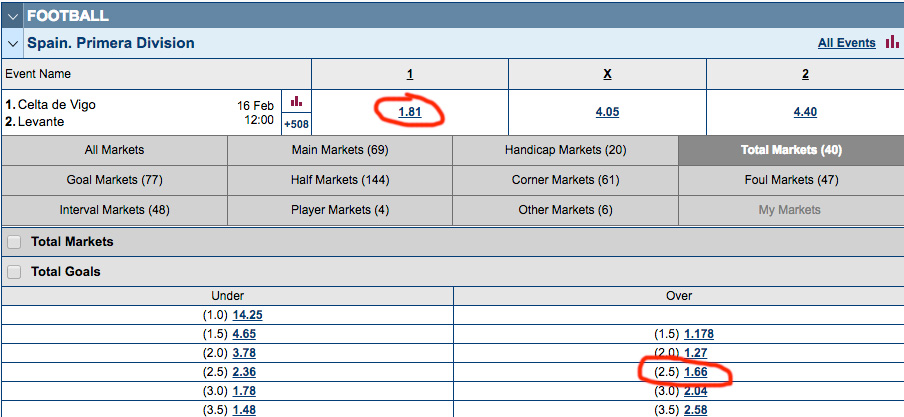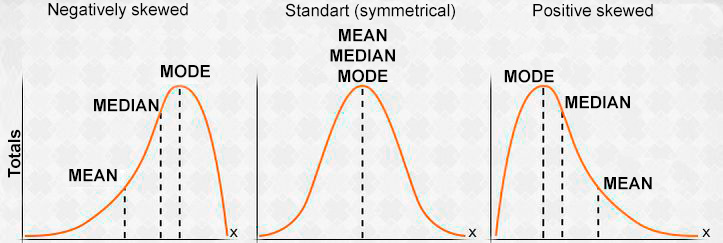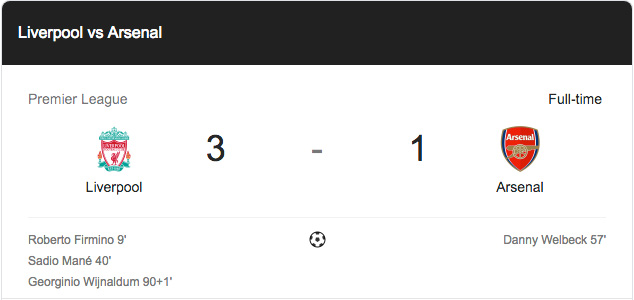Contents
What is total in football betting? What total-based betting strategies can you use? What are the typical patterns you can base your calculations and predictions upon?
In football, total means the total number of goals scored in a match.
The notion of total can also refer to corners, yellow cards, shots on target, etc.
There are certain strategies that can be successfully used in different variations of total betting. In this article, we will see how it all works in practical examples.
After a bit of important theory, we will look at how to bet on total: what strategies and patterns you can use for your benefit.
Example. TO (total over) and TU (total under)
Suppose, I bet 100 dollars on TO (2.5) with the odds 1.65. If the total number of goals in the match is 3 or more, my bet will win and I will make a profit of:
100 х 1.65 – 100 = 65 dollars.
Types of Total Bets in Football
Read further to learn about other types of totals and what you can do with them.
All the total types listed below can be applied to any of the following events:
- Corners
- Yellow cards
- Falls
- Shots on target
- Offsides
- Other events offered by the bookmaker
What Are Additional Totals in Football?
Typically, apart from the regular bet on the total number of goals in the match (with the odds usually being 2.5), bookmakers offer additional total bets with odds of 1.5, 2.0, 3.0, 3.5, etc.
Shown in the screenshot, are three variations of totals:
- half-number (1.5, 2.5, etc.)
- whole-number (2, 3, 4…)
- Asian (1.0, 1.5), (2.5, 3.0)…
What is 3-Way Total Bet?
In some bookmaker lines, you will see a ‘3-way’ total bet offer.
The specifics here is that your prediction is supposed to be precise (2, 10, etc.).
A 3-way total bet, typically marked as ‘3way’, is sometimes described as a bet on either ‘total under’, ‘total over’ or the exact number of scored total goals.
Example
If you bet on the exact total number of goals being 2, your bet will win if the score is either 1-1, 2-0, or 0-2, that is, in three scenarios.
Halftime Total
Besides bets on total goals scored by the end of the match, bookmakers offer halftime totals.
Odd/Even Total in Football Betting
In this strategy, the number of goals is not the only figure that can be even or odd.
Individual Total
Unlike with regular totals, in individual total bets, you bet on a specified team or player to score a certain total number of goals, etc.
Total Goal Minutes
This curious type of betting is also called total goal times.
According to this type of total betting, you bet on over/under total time it will take players of both teams to score all the goals in a match.
Confused? Here is an example.
Match: Leicester — Liverpool
We bet 100 dollars on total under 126.5 with the odds of 1.9.
Quite unexpectedly, the match resulted in Leicester’s confident win. The goals were scored at the 28th, 39th, 60th and 68th minutes. So, the total goal minutes are:
28 + 39 + 60 + 68 = 195 minutes which is more than 126.5.
The bet won and our net profit is
100 х 1.9 – 100 = 90 dollars.
Predicting total goal times is not an easy task. When analyzing statistics, apart from the teams’ tactics and motivation, you should focus on the following aspects:
- Is the match likely to be a scoring one?
- What is the teams’ typical pattern of playing in each of the halves (e.g., a passive first halftime and an active second, etc.), do they sit on the lead?
- What is the probability of goals to be scored by the end of the match?
The last item is the most important one. If bettors expect an active scoring game until the last second of the match, they will choose to bet on a high total.
Ten-Minute Total
Here punters are supposed to predict if (how many) goals will be scored or corner kicks made in the first 10 minutes of the match and bet on a total over/under accordingly.
Obviously, it’s a completely random bet…
Multi-Corners Total
In a multi-corners bet, you bet on
Total corner kicks in the first halftime * Total corner kicks in the second halftime
being more or less than the number in the bookmaker line.
Example. We bet on multi-corners being over 19.5. The result is 11 multi-corners in the first halftime and 6 — in the second. We multiply 11 by 6: 11*6 = 66. Our bet won.
Accumulator Total in Football
In the ‘totals’ section of some bookmaker football lines, you can see offers for accumulator bets — two-fold:
and three-fold:
The selections typically include total goals, total corners, and total yellow cards. Surely, punters can pick events for themselves, but having ready-made offers with odds is very convenient.
Strategies of Betting on Totals in Football
Arbitrage Betting on Totals in Football
Arbitrage betting often involves betting on totals. Use the link to learn about what arbs are and how to use them to earn profit irrespective of match results. (I personally consider arbitrage to be the best fool-proof betting strategy.) There is also a notion of ‘incomplete arbitrage’ alternatively called Dutch betting. Here I explain what an incomplete arb is and provide examples with screenshots on how to use it together with the ‘odd spread’ and ‘exact score’ strategies. I also cover the issue of odd totals and draws. Follow the link to learn more.
Chasing Totals in Football
Alternatively called Martingale. The idea is to ‘catch up’ with the chosen total by increasing the bet amount after every loss to make up for it and receive profit.
Read more about chasing(Martingale) strategies, such as limited martingale, double martingale, etc.
Live Betting Against Total in Football
This is one of the simplest strategies. The idea is to pick a match with odds on TO (2.5) more than 2, bet on total under and see how the game is going.
The odds on TO (2.5) will be going up almost immediately. Once they are more than 2, we can take advantage of the ‘arb’ and make another bet on total over. Profit is now guaranteed.
A Practical Real-Life Example
Let us see how the strategy works in the practical example of a Leicester — Liverpool match.
The match promised to be an intense one: Liverpool was determined to get into the Champions League zone, while their opponent, who had just switched coaches, was fighting hard to remain in the Premier League. Bookmakers favored Liverpool. A little more than an hour before the match, the odds on TO (2.5) were 2.18 and I made a 1000-dollar bet on the event.
As soon as the match began, I was watching with all my eyes. Almost immediately, the odds on TO (2.5) began to shift:
The 3rd minute: 1.95-1.98-2.0. By the end of the 10th minute, the odds reached the 2.1 mark. I must confess, it was a very intense start with a good chance for a goal. So, I decided to make the same 1000-dollar bet on TO (2.5) with the odds of 2.1, — and at the 15th minute, the odds were already 2.22.
By the 17th minute, the odds on the total were at 2.0. To experts’ surprise, the match ended with a confident win of Leicester with the score of 3-1 which opened at the 28th minute.
Calculations:
My first bet lost and my second bet won. The net profit was:
1000 х 2.1 – 2 х 1000 = 2100 – 2000 = 100 dollars
This was an example of a favorable scenario which helped me reach my goal. However, in case of a quick goal, things could be different.
Adverts of the strategy recommend you wait for about 5 to 10 minutes and then bet on total under 3.5. Approximately by the 30th minute, we can ‘break even’ by betting on TO (2.5) and TO (3.5). If you wait until the 35th-40th minute period, you can make profit. If a goal is scored again, you should apply the same scheme.
That said, the strategy is not as easy as it seems. Punters should be able to make accurate calculations, keep a cool head and make quick decisions. In case of a bad scenario, they will have to take steps similar to those used in martingale strategy.
Smirnov’s Strategy of Live Betting on Football Totals
In your travels on the internet, you may have come across the name of Smirnov, a professional trader on the Betfair exchange. As a side job, he bets on sports and makes betting predictions. In certain circles, he has gained popularity as the author of some betting strategies that he tests on various internet platforms.
The most famous are his two strategies of live betting on totals.
Live Betting on Total Under
One of the strategies (which is often criticized) suggests live betting on TU with odds of 1.02-1.03. Here is the author’s example of this type of betting.
A football match between Moscow teams, Spartak — Lokomotiv, the 32nd minute of the first halftime. We make a bet on TU (5.5) with the odds 1.03.
The author offers strict criteria for choosing matches where the strategy can be used.
Live Betting on Total Over
The author recommends using Asian total with odds around 2.0. According to the strategy, you bet on TO in the first halftime and on the overall TO in the second. During a halftime, you can make up to three bets (TO 1, TO 0.75, TO 0.5) in case no goals are scored.
The first bet is supposed to be made in the 10th to15th minute period. According to the author, choosing a match for betting on totals should involve use of such powerful instruments as statistics and watching the match live. The strategy was tested on various betting forums under the name ‘An Epic Rise in Live Betting’.
On the web, you can see quite a number of similar-looking fishy websites that sell Smirnov strategies.
As a bettor, I like live strategies. And Smirnov’s ideas, as well as tests of his strategies at forums, no doubt, give you good ‘food for thought’.
The Strategy of Betting on Total Goals in the First Halftime
In bookmaker lines, the offer may look like this:
- 1st half, Total Over 0.5
- Goal in the 1st half
What is the idea of the strategy?
A punter places a bet on a goal in the 1st halftime — either before the beginning of the match or after it. The latter variant is preferable, as bets on TO (0.5) in the first half tend to have low odds — from 1.2 to 1.4 on average. Sometimes the bet is not offered at all…
Once the match starts, you can watch changes in live odds. If no goals are scored, the odds will rise, and bookmakers that initially did not include the bet, will add it at this point.
While watching the game online, it is important to choose the right moment for the bet. Between the 10th and 20th minute the odds can go up to 1.5-2.0. This is the time when the bet should be made.
Many bettors who use this strategy monitor several matches simultaneously. When the first half is over, it is time to review the results. If some of the matches had unfortunate results, we should continue to work on them. One option is to bet on the overall TO (0.5) in the match (the bet amount should be enough to make up for the previous loss).
Some punters, seeing that the play is dull, and the players are passive, try to minimize the loss by betting on TU (0.5) right away, without waiting for the 1st half to end. If, during the time when we are ‘waiting’ for the odds, a goal is scored, we can just ‘ditch’ the match.
Example
Suppose, our bankroll is 1000 dollars. We split the amount into 20 50-dollar bets (5% of the bank) and monitor the odds in the first halftime. Once they are about 1.7, we make 20 bets on TO (0.5).
100 / 1.7 = 0.58
20 bets * 0.58 = 11.6
The above calculations show that, to be in the black, we need 12 of our 20 bets to win.
The Specifics of the System
- Both the championships and the pairs of opponent teams should be chosen with great care (use the statistics services…).
- It is better to make bets in a live mode — in this case, you will have much greater opportunities.
- To make effective judgements about possible outcomes of the game, it is recommended that you previously watch the teams in action.
- In case of an unfortunate scenario, you should have a clear plan of actions (insurance, chasing).
- The betting strategy should be combined with financial principles of bankroll management.
The Strategy of Betting on Win and Total in Football
In bookmaker lines, you may see an offer combining two events at once — the outcome of the match and total goals. For this combined bet to win, you need to correctly predict both the outcome of the match and the total number of scored goals (over/under).
The most common variant is a combined bet on the win and TO/TU 2.5 (there may be variations like TO/TU 1.5, 3.5, 4.5, but no whole numbers).
This kind of bet may look different and have different names:
Both screenshots feature the match Celta de Vigo— Levante which, at the first glance, seems to be a good choice to bet on win and total.
When betting on win and total, you should consider the following issues:
- Since win and total are interdependent events, it will be difficult to combine them for yourself. You can regard it as a bookmaker’s ‘gift’ which you will have to compensate for with a higher commission fee.
According to the screenshots, the odds for the combo bet (if you could make it) would be
1.81 х 1.66 = 3.0046, while we are offered 2.5. - What are the rules for choosing matches for this strategy? The most logical scenario seems to be one when one of the teams is a favorite and the match is expected to be high-scoring: win + TO (2.5). Of course, there are other options, too, like one when you expect a win, but, most likely, with a minimum score. In my opinion, this variant is riskier. A more sensible option is betting on a win and a total under 3.5.
- Some think that the main advantage of this type of betting is the possibility to increase odds that, taken separately, are not high, but combined together (‘win+total’) help increase the profit if the prediction is right.
The match in question, no matter how hard Celta tried, ended with a draw 1-1… This type of betting, like any accumulator betting, is quite risky, but provided the bettor is competent enough, can well be used along with other strategies.
The Patterns and Statistics in Betting on Football Totals
Why do we need statistics? By analyzing statistical data, we can identify some logic or, otherwise speaking, repeated patterns in events.
The most relevant data in the statistics of totals in football include information about:
- scored and missed goals (in both home and away games, the first and second halves),
- the performance of both teams and particular players in their last matches,
- corner kicks, yellow cards, etc.
An important stage of choosing the bet is the search for and analysis of the relevant information. There are many websites providing football statistics, paid and free, universal and specialized (e.g., offering statistics on yellow cards or corner kicks only).
Paid services usually make only part of the information freely available while saving the ‘juiciest bits’ for those who will be willing to spend a certain amount on it.
So what patterns should we consider when betting on football totals?
On the internet, you can come across various tips, recommendations, and patterns that apply to football matches. Most of them concern live betting.
- Zero halftime score. After the 1st halftime, the scoreboard will often show a nil-nil score since at first teams tend to be cautious and play safe. Oftentimes, after the break, the game gets more intense and you can expect goals. Hence, relying on statistics and current information about the teams, it makes sense to bet on TU in the first half and on TO in the second.
- ‘Reversed’ game. When a favorite plays against an outsider, and the latter scores a goal in the beginning of the match, you may hear about a ‘reversed’game. In this case, you should consider betting on totals of the stronger team once the odds go up.
Here are some more recommendations from my own experience:
- One of my cardinal rules is never to bet on friendly games. Low to no motivation makes betting pointless.
- Make right judgements about motivation of the teams. Approximately equal in strength teams can demonstrate a scoring game in a regular match while, when the outcome has a big significance (e.g., in cup playoff games or large tournaments), they may choose to act cautiously, playing strict defense. All these factors influence totals.
Example: In the Champions League playoff game, Barcelona lost the first match to PSG 4-0. In the return match, to get into the next tournament, the Catalonians needed to score at least 5 goals while not letting a single ball into their own goal. The challenge and motivation were super high thus offering a good opportunity to bet on the individual team total.
By the way, the return match ended with the score of 6-1 for Barcelona.
- Many bettors choose to bet live and they have a good reason to do so. No matter how well we perform a pre-match analysis, the game can take on an unexpected twist. It may turn out that the key striker is absent on the field (which was kept a secret until the very last moment) or the weather may turn nasty. A slippery field can make it difficult for players to play in full force and score many goals.
I don’t belong to the category of punters who attach too much meaning to statistics and ‘patterns identified by professional bettors’. For example, I don’t quite understand the importance of years-long football statistics like the last century’s history of personal matches.
In my opinion, every bettor will eventually decide for themselves what strategy works best for them in this or that situation and what factors they should consider when betting on totals.
Alongside with patterns, there is always an element of randomicity that can make all your calculations fall apart. That is why betting on football is to some extent unpredictable…
How to Predict Total Scores in Football. The Math of the Game
Let us start with an abstract example of how a figure like average total can mislead novice bettors.
Suppose, in the last 10 matches a team scored 28 goals — 2.8 per game on average. So, betting on TO (2.5) may seem like a good idea. However, if you analyze the matches, you will see that some of them ended with the scores of 5-2, 4-0 and 3-3. This means that the TO (2.5) bet would have won only in 4 games out of 10. Now the logic does not seem as cast-iron as it just did…
The point here is that you should consider the average total figure only in two situations:
- When your selection of matches includes a long-term period.
- When there are no significant fluctuations from average results.
That is why, when considering a TO or TU bet, it is always wise, instead of looking at average results for a certain period, to focus on how many of the games demonstrated the result you want.
It is true that average figures give you a general idea of the situation, but they do not take into consideration the type of distribution. A good alternative to average results (whose unreliability was demonstrated above) is statistical values like mode and median.
That said, punters should invest their time in learning some mathematical concepts. In respect of totals, these will be: mean, median, mode, dispersion, and spread of values.
Spread of values is characterized by the following notions:
- Numeric range (the difference between the largest and the smallest values);
- Dispersion (mean square deviation).
Dispersion — the term is typically used to evaluate the deviation of a value from the mean. The notion may prove to be particularly helpful in short-term betting (see the example above).
Mode — the most frequent value in a range of numbers.
Median — the value that lies in the middle of a sequential range of numbers.
Let us look at three series of numbers with different dispersion types where the median value is 6 and the sum is 30.
- 5, 5, 6, 7, 7
The first range is characterized by symmetrical dispersion with the median value placed in the middle of the range. Here 6 may be well used as the average value. - 4, 5, 5, 5, 11
TIn the second series, the last number stands out of the sequence and the rest 4 values are lower than median. Obviously, we deal with asymmetric dispersion, which is why we should use 5 as the mode in the range. - 4, 5, 6, 7, 8
TIn the third case, the dispersion is symmetrical again, but with a larger scatter of values. Here we should regard 6 as the median value.
Understanding when average values can be misleading, and what values can be used as their alternatives, helps make more accurate predictions when betting on totals in football.
How to Make Calculations When Betting on Totals in Football: Apps and Calculators
Apart from statistics services, there are many other methods that help analyze matches and calculate totals in football. They include software programs and online calculators.
Here is an example of a system of calculating totals according to the formulas from the famous book by Miller ‘How Professional Gamblers Beat the Pro Football Pointspread’.
Let us calculate totals for a match Liverpool — Arsenal.
The scores of the last four Liverpool’s matches were the following:1-1, 0-2, 2-0, 1-3.
To calculate the attack rate for Liverpool, we remove the largest and smallest numbers of scored goals, that is, 2 and 0, add the remaining values together and divide the result by two: (1+1)/2 = 1.
Likewise, we remove 0 and 3 to calculate Liverpool’s defense rate based on missed goals: (1+2)/2 = 1.5.
Now let us make the same calculations for Arsenal’s four last games — 2-1, 1-2, 1-3, 2-0.
The resulting attack rate is (1+1)/2 = 1, while the defense rate is (2+1)/2 = 1.5. Then we need to calculate the number of goals that Liverpool can score. To do this, we add to Liverpool’s attack rate Arsenal’s defense rate and subtract the value of the average number of goals scored in the championship in question: (1 + 1.5) – 1.5 = 1.
Then we make the same calculations are for Arsenal: (1 + 1.5) – 1.5 = 2.5 – 1.5 = 1
So, the predicted score of the match is 1-1 and it seems safe to bet on TO (1.5).
In reality, the match ended with the score 3-1. The bet won but the prediction did not come true.
The presented calculations of totals are rather simple. There are more advanced variants that take into account:
- goals scored in home and away games;
- strength of opponents in the last matches;
- statistics of personal games;
- more than last 4 games.
To simplify the calculations, you can enter the data in Excel sheets. Some punters create the tables themselves while others use ready-made variants found on the internet.
You can also use online calculators that apply certain algorithms to make calculations of totals for forthcoming football matches based on data entered.
Apps for Calculating Totals
Where there’s demand, there’s supply… To assist bettors, there have been developed a lot of software that helps calculate and predict total scores of football matches.
I don’t provide any links here, as I believe that you can use such apps only as an additional tool and by no means regard the predictions as the ultimate truth.
- Robobet
- Total Prognoz
- Total Prorok (Total Prophet)
- Master Prognozov (Prediction Master)
- Analyzer
- Gol Plus Total Pro (Goal Plus Total Pro)
- The Program for Calculating Totals According to Schukin’s system
All of the above are automatic systems that use predictive modules and statistical data to predict the outcome of football matches in percentage ratio.
The most advanced of the apps can conduct a complex analysis of the information that includes not only statistical data (which is collected by the program automatically), but also the information about absent players and weather conditions on the day of the match.
CONCLUSIONS:
Mathematical and program statistics-based methods of calculations are definitely helpful for betting on totals in football, but only when used as an additional tool. We all dream of finding a ‘golden formula’ that will guarantee us the desired results. However, it is hardly possible to find or create a stable and reliable prediction system based on statistical and mathematical laws. That is why, it is surprising to hear some bettors wailing about this or that betting method letting them down.
Summary
In the article, we focused on betting on totals as one of football betting types. The main idea behind the article can be boiled down to two key points: the high importance of statistics and the advantage of live betting over pre-match predictions (or their combination).




